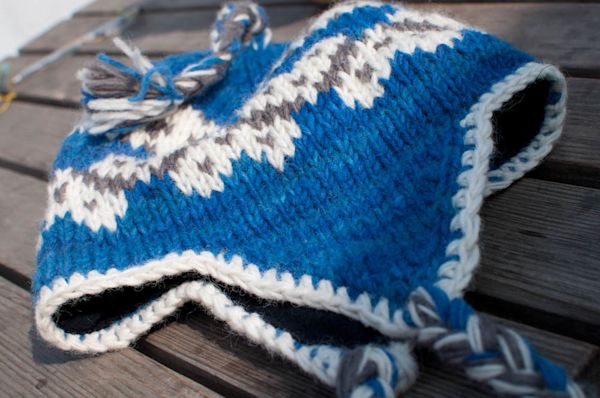Lights out in Nepal: Working through Load-Shedding
January 31, 2011
By Claudine Emeott, KF14, Nepal
When I arrived in Nepal to begin work with Kiva’s local partner here, BPW Patan, the majority of tourists and trekkers had just cleared out, likely heading for warmer climates or at least easier living conditions — because, by most standards, winter makes life in Nepal rather challenging.
First, there is the cold. Yes, daytime temperatures reach the mid 60s, which is about 60 degrees warmer than the temperatures I gladly left behind in Chicago. But there is no central heat, and buildings are constructed of cement and marble, with no insulation. So while it may be sunny and warm outside, I am finding it common to see my breath indoors at the same time. There are ways to combat the cold, though, and I am following the example set by locals, who wear several layers, scarves, and the wool ear-flap hats that are de rigueur these days:
While the cold can get slightly uncomfortable, a far more challenging aspect of winter is a lack of water. Nepal has a dry season, generally from October through March, and a wet season, typically from April through September. When the water levels are low in the dry season, the Nepal Electricity Authority (NEA) has to forcibly reign in electricity consumption with scheduled power cuts, which, at their worst, make up 12-14 hours of each day. Here is the current load-shedding schedule; it is generally reliable, but in practice the time blocks may differ by an hour or more:
Although the load-shedding schedule ensures that all areas equally receive (or do not receive) electricity, this nod to fairness stops there. I am fortunate enough to live in a home with an inverter, which allows us to power our laptops, run wireless internet, and use low-watt light bulbs even when the electricity is off. Many people, though, cannot afford an inverter (depending on the inverter and its capability, prices start at about $60 and climb into the tens of thousands of dollars).
BPW Patan, whose office is located in Group 7 for the load-shedding schedule, does not have an inverter. As staff told me repeatedly on my first day at the office, working without consistent and plentiful electricity during the winter months is very challenging. BPW has accordingly kept its operations relatively low-tech. For non-Kiva loans, BPW staff keep meticulous records in paper ledgers:
And use standard calculators and good math skills for their calculations (seeing this, I tried to recall the last time I did not use Excel to perform financial calculations. I came up short).
To track their Kiva loans, the staff use a laptop and internet off-site, typically at the house of BPW‘s director, Urmila Shrestha. Because of the load-shedding schedule, Sanjeev (the Kiva Coordinator), Urmila, and now I often have to work at odd hours to process Kiva-related tasks.
But despite these challenges, BPW Patan still manages to serve a current count of 1,248 women borrowers. I find this pretty amazing.
Claudine Emeott is a Kiva Fellow working with BPW Patan in Patan, Nepal. Want to support women entrepreneurs in Nepal? Check out the BPW Patan Lending Team.


















